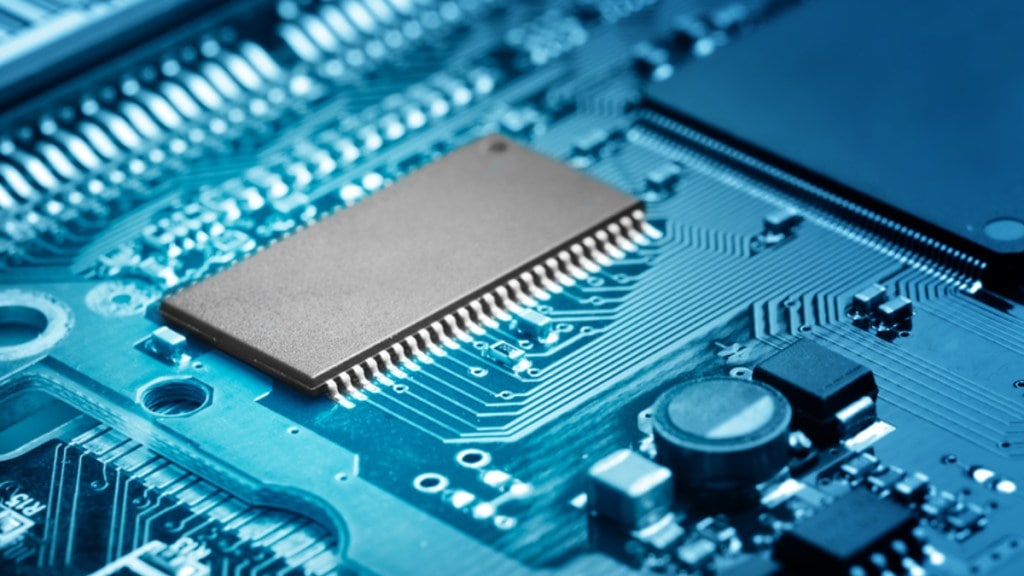Semiconductors are now the fundamental components of military equipment and systems.
How critical is the semiconductor industry as governments around the world are investing billions of dollars in building domestic semiconductor capabilities? The importance that governments across the globe attach to the semiconductors industry is evident from such initiatives and investments such as India’s $10 billion Semiconductor Mission, the US government’s $208 billion Chips Act, and China’s grand $1.4 trillion investment vision for its semiconductor sector by 2025.
Currently, India’s semiconductor demand stands at around $24 billion and is expected to reach $100 billion by 2025.
While the Indian government has increasingly focused on building India’s domestic semiconductor ecosystem and enhancing India’s role within the global semiconductor value chain, the country’s semiconductor demand is largely met through imports.
Taiwan’s chipmaker Foxconn’s exit from its joint venture with Vedanta has also raised critical debate on the chip manufacturing proposition with India. Foxconn earlier planned to invest $20bn in semiconductor manufacturing in India over the period.
Chips challenges
Despite the greater ambition and government’s effort, India’s quest for manufacturing semiconductor chips seems to be constrained by the lack of investment. The falling out of the Foxconn-Vedanta deal puts the whole thing back on the square.
What is needed then?
Recently, the Ministry of Electronics and Information Technology (MEITY) highlighted that to set up the chip manufacturing units, India needs 10,000-13,000 skilled and specialized human resources to meet industry requirements by 2027.
A Meity official further clarified that while India has a big pool of semiconductor design engineers, but to handle semiconductor plants (wafer fab), talents will initially come from overseas, and gradually resources will be developed in the country.
The key aspect still remains the investment and incentives to attract the chipmakers. As the government recognized the challenge amid the global rush to lure such entities, dolling out massive subsidies and incentives among other benefits.
Keeping that in mind, India launched its production-linked incentive (PLI) scheme. Especially for semiconductor and display manufacturing projects, the government has launched financial incentives of up to 50% of the project costs, totalling $10 billion.
Sanjay Gupta, Vice President & India Managing Director at Netherlands-headquartered NXP Semiconductors, explained: “The subsidies that the government is planning to give through the PLI scheme, as well as the design-linked incentive (DLI) scheme, is a huge commitment. Why it is unprecedented is because earlier schemes used to be on tool cost and this time it is on project cost, which includes everything.”
Chips for military
Chips as semiconductors are now part of the widest range of military platforms or systems such as combat jets, unmanned systems (drones), helicopters, warships, submarines, missiles, and communication networks.
The key ‘autonomous part’ of such equipment is driven by the chips which command, control and store data.
Currently, India’s sole military research agency, Defence Research and Development Organisation (DRDO) develops semiconductors for military systems. However, India has to import a majority of the chips for indigenous equipment.
In fact, the Ministry of Defence (MoD) has asked for 5 lakh chips for various military applications.
That is an impediment as we are dependent on foreign manufacturers, which also restricts future upgrades, says a senior military official who was part of the military drones project.
Additionally, with the critical military network based on IoT and 5G/6G technology in India, the demand for semiconductor chips will increase exponentially.
The government has set the primary goal to have two versions of indigenously designed and developed ‘secure chips’. About 50,000 such chips are expected to be deployed in systems and equipment for the armed forces.
Additionally, the “deployment-linked incentive (DLI)” facilitates indigenous designing and manufacturing of secure semiconductor devices, says a Meity official.
However, the challenge remains in addressing the critical materials for the semiconductors such as carbon fibre, silicon, tungsten and boron carbide. For these materials, high capital investment is required initially.
The present geopolitical conflicts further pose challenges for the supply chain for military equipment in case of dependencies on foreign suppliers.
